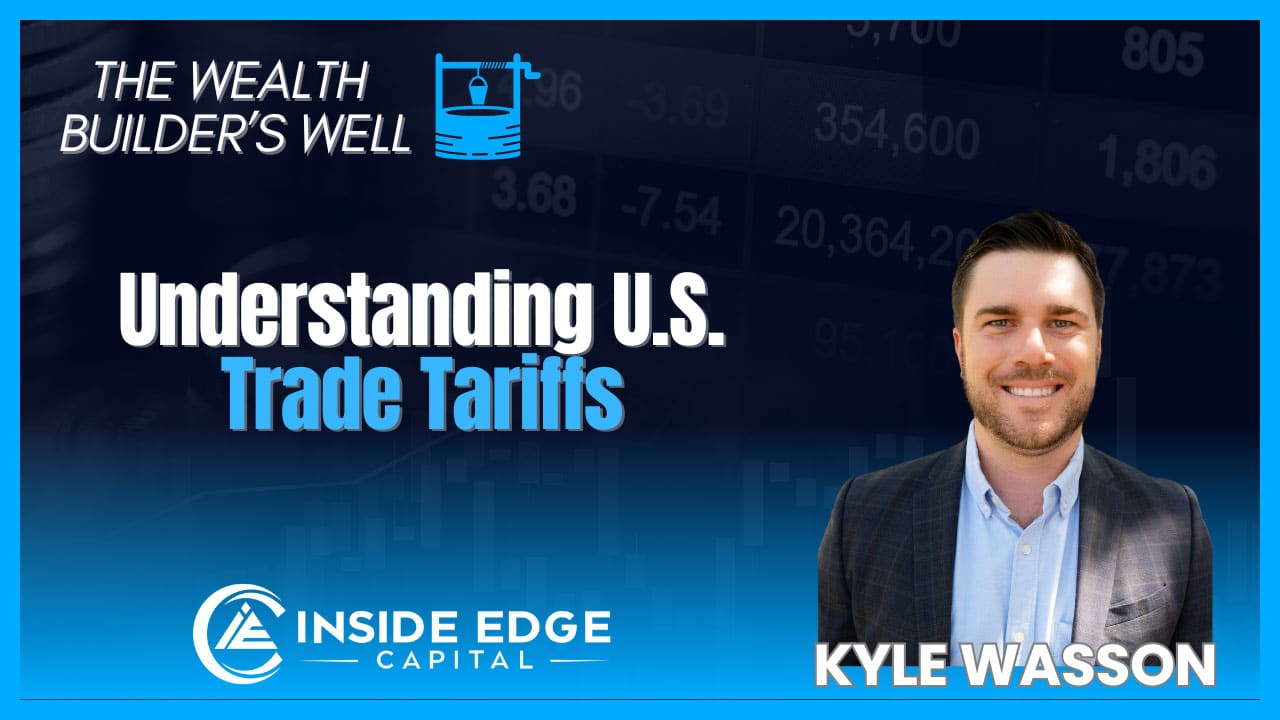Global trade uncertainty is shaking markets in early 2025. The proposed U.S. tariffs on imports from other countries are driving the noise and forcing business, investors, and consumers to prepare. What are tariffs? What do they mean for you? Let’s explore further.
Tariffs aim to balance trade competition. A tariff is a tax on goods imported from other countries. Tariffs were a very effective tool for the US during the 1800s, and between 1861-1933 the US had one of the highest average tariff rates on manufactured imports in the world. They proved highly effective for the United States throughout the 1800s, and from 1861 to 1933, the U.S. maintained some of the world’s highest average tariff rates on manufactured imports. Following the New Deal in 1933 tariffs began to fade, giving way to income tax, sales tax, and property tax as primary government revenue sources.
U.S. trade policy has shifted dramatically over time. For decades, leaders like Presidents Clinton and Bush embraced free trade and globalism, with agreements such as NAFTA and China’s WTO entry opening the U.S. consumer economy to global markets. Now under President Trump’s leadership, the focus has made a 180-degree turn toward protectionism and tariff policy.
During President Trump’s first term, tariffs were largely limited to steel and aluminum and produced varied outcomes. The Economic Policy Institute found that these tariffs had a negligible impact on inflation with a 0.5% one-time price increase. On jobs, roughly 12,000 new jobs in steel and aluminum were produced, although critics argue retaliatory tariffs and higher costs for downstream industries caused more job losses than the jobs gained.
Under a free trade policy, U.S. manufacturers lost ground to cheaper imports for years. The U.S. textiles and apparel industry provides a stark example. Following NAFTA’s signing in 1994 and the elimination of tariffs, which previously averaged 10%, export-oriented factories sprang up near Mexico’s northern border (known as maquiladoras). Consequently, U.S. textile and apparel employment plummeted from 1.6 million in 1994 to 500,000 by 2010, a loss of over 1 million jobs. Conservative estimates attribute hundreds of thousands of these losses directly to NAFTA, as Mexico’s tariff-free access to the U.S. market fueled a surge in apparel exports, undercutting domestic producers.
Separately, many foreign governments subsidize specific industries to lower the cost of their goods. For instance, since joining the WTO in 2001, China’s government has heavily subsidized its tire industry, maintaining low production costs and flooding the U.S. market with inexpensive tires. This has undermined American manufacturers, forcing companies like Goodyear to shutter U.S. plants and relocate some production abroad. Absent a tariff policy to counteract these subsidized imports, the U.S. struggles to protect its domestic industries from such unfair competition.
So are are tariffs good, or bad? Supporters of tariffs claim they boost local manufacturing and bring in revenue. They also reduce reliance on foreign production. For job creation in the U.S., higher import prices caused by tariffs often spark investment and create jobs in the U.S. History shows this worked before. As tariff threats loom, companies like Taiwan Semiconductor Manufacturing (TSMC) have announced $100 billion investments to build plants in the US that would avoid tariffs. The hope with tariff policy is that the benefit (jobs and stronger domestic economy) will outweigh the cost (inflation). Both sides have a point. Tariffs are designed to benefit countries with a trade deficit like the U.S. has. Critics correctly argue that tariffs make consumers face higher prices and retaliatory tariffs, which have their own adverse effects. Tariffed items usually raise in price, at least in the short-term.
One key reality of U.S. trade policy is that the U.S. imports a lot more than it exports. This gap creates trade deficits. Below is the list of the ten countries whose positions are weakest concerning a potential trade war with the U.S. (ranked by current trade surplus):
- China $279 billion
- Mexico $152 billion
- Vietnam $104 billion
- Germany $83 billion
- Japan $71 billion
- Canada $67 billion
- Ireland $65 billion
- South Korea $51 billion
- Taiwan $47 billion
- Italy $44 billion
As the media has made clear, there are risks of a trade war between countries when trade policies shift. Yet, current indications suggest that many “deals” will be negotiated to reduce U.S. trade deficits with specific countries before tariffs are actually levied. In Trump’s first month in office, he has already announced tariffs on Mexico and China, rescinded such tariffs after negotiations, and re-introduced new larger tariffs on Mexico and China (presumably for future negotiations to follow in the same suit).
Tariffs aren’t a perfect solution. They aren’t a disaster either. They’re a tool with trade-offs. Used well, they can reshape trade flows and boost U.S. production capacity. If mishandled, they risk unsettling a vast global economy.
In parting, remember that most of the market reaction to tariffs is based on untested speculation and what-ifs. Disciplined investors who avoid knee jerk moves, stick to their risk comfort zone, and have cash reserves for investment may find significant opportunities amid the recent volatility.




